The best medicine in dealing with poisonous plants is prevention. Horses usually avoid eating poisonous plants as long as there is an abundant supply of good-quality hay or pasture. Ensure that horses on pasture have adequate hay and grass not to have to resort to eating poisonous weeds. Avoid overgrazing if no supplemental hay is available. As a horse owner and caregiver, you must learn the toxic plants of horses to recognize them and pull them. It would be best if you examined the hay and grasses for any unwanted plants.
Importance of Poisonous Plants for Horses
There are thousands of toxic plants to horses identified throughout the world and a large number of ornamental plants. Horses are at immediate risk of one or more poisonous plants are present in the pasture. You must have workable knowledge to correctly identify the most common and dangerous poisonous plants for horses. Knowledge of the clinical picture produced by the common toxic plants is helpful in the differential diagnosis of various specific diseases with similar clinical signs.
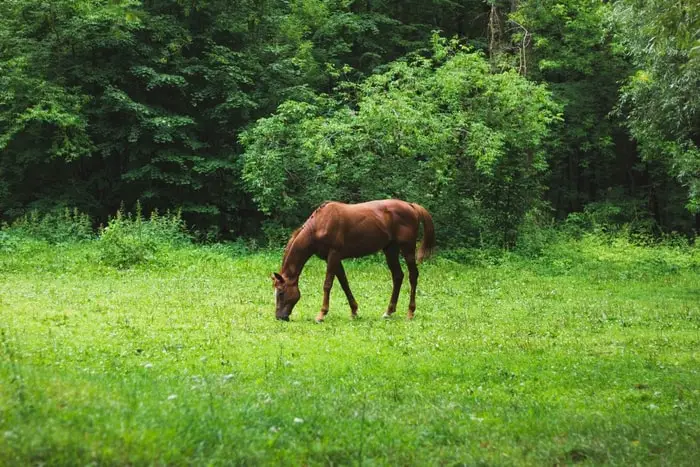
Risk Factors of Toxic Flora to Horses
The toxic plants are not equally toxic to all horses and all the time. All the plants are not equally toxic in every situation. The risk factors of toxic plants are as follows:
1. Quantity Ingested.
Poisoning usually occurs when horses consume large quantities of a toxic plant over several days, weeks, or months. Rarely is a horse poisoned by a single mouthful of a plant, except in highly poisonous plants like Oleander.
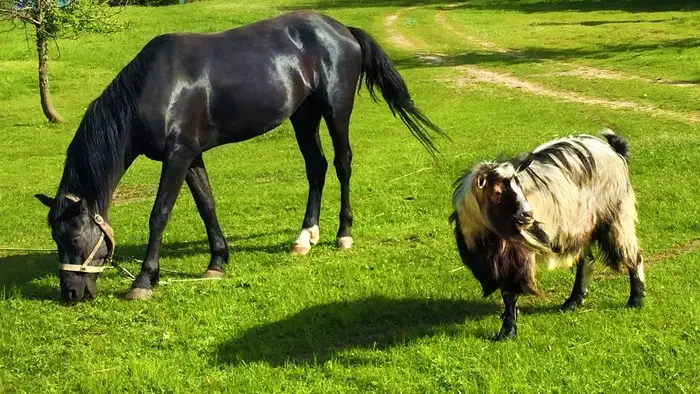
2. Palatability.
Many poisonous plants are not consumed because they are unpalatable due to bitterness or the presence of spines or bristles. After eating, palatability and a feeling of illness are how horses learn to avoid some poisonous plants but not others.
3. Accessibility.
Many highly toxic plants may not be accessible as they grow deep in forests, while others increase their chances of consumption as they share the habitat and growing habits with forage crops.
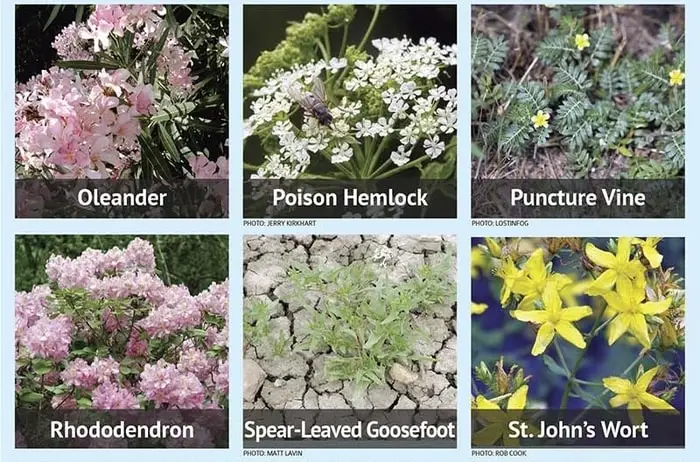
4. Familiarity and Hunger.
Animals on the satisfactory plane of nutrition will not eat poisonous plants. Horses hungry due to starvation in drought or after work are at most significant risk when let out to. Grazing or tied horses adjacent to plants to which they are unaccustomed.
Common Harmful Weeds for Horses
There are hundreds of toxic plants available in the pasture that may cause poisonous effects on the horses. All the poisonous plants are not equally harmful. Each poisonous plants have different toxic principles and mode of action. The clinical signs and outcomes also differ from plant to plant. The most common poisonous plants for horses are:
1. Oleander (Nerium Oleander). The plants are containing cardiac glycosides and cause diarrhea, vomiting, shock, cardiac arrest, and death within 24 hours.
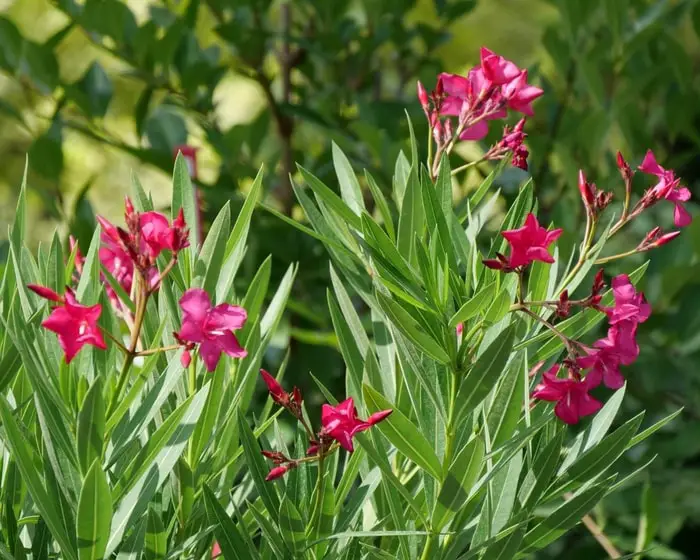
2. Yellow Oleander (Thevitia peruviana). This is also a common toxic plant in the horse pasture, causing sudden death. The plant’s toxic principle is cardiac glycosides and causing vomiting, diarrhea, shock, and death lesser than 24 hours.
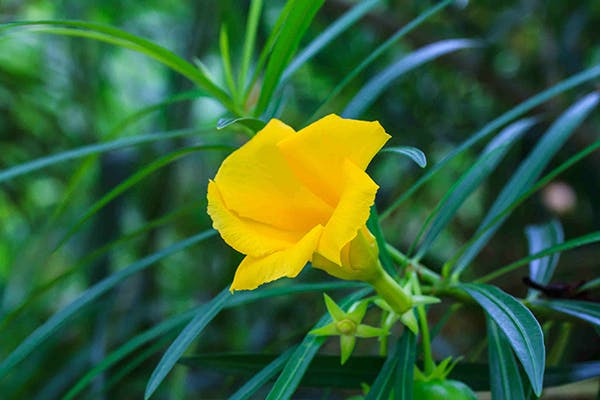
3. Rhododendron (Rhododendron spp). The toxic principle of this plant is grayanotoxins and arbutin. The plant is salivary inducing and causes salivation, defecation, depression, and incoordination.
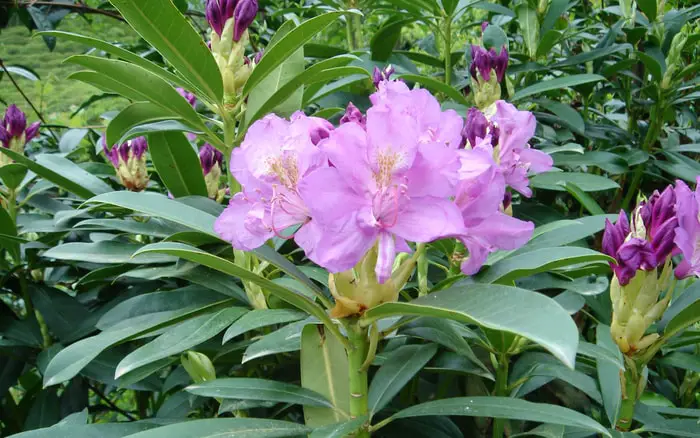
4. Castor Oil Plant (Ricinus communis). The toxic substance of the castor oil plant is lectins. The seeds are highly toxic and cause poisoning after ingestion of less than 0.01% of body weight, causing trembling, incoordination, and diarrhea.
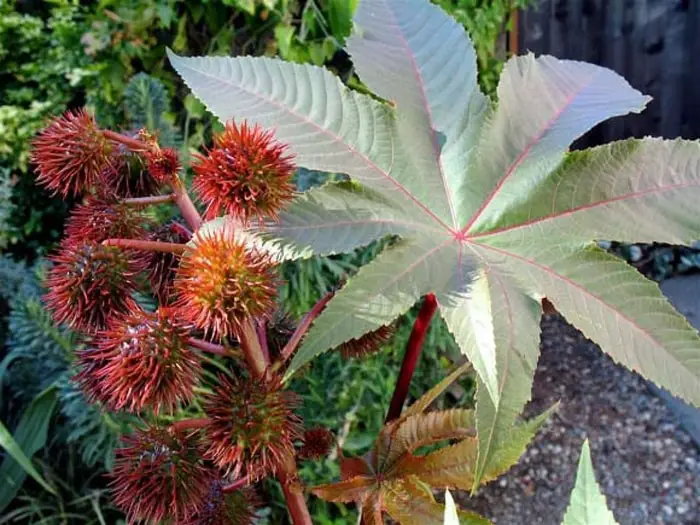
5. Rosary Beans (Abrus Praetorius). The toxic principle of the plant is hyoscyamine. The toxin causes excitement, depression, diarrhea, and weakness.
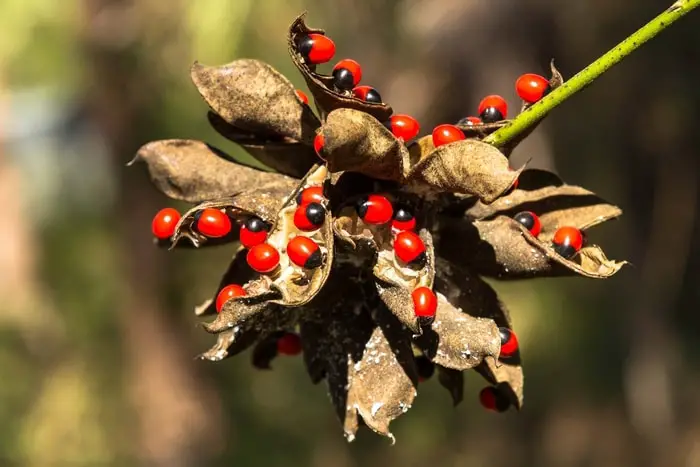
6. Thorn Apple (Dutura stamonium). The plant is prevalent in the horse pasture and readily available in hay or green grass. The toxic substance of thorn apple is hyoscyamine. The plant poisons causing in horse incoordination, weakness, depression, and diarrhea.
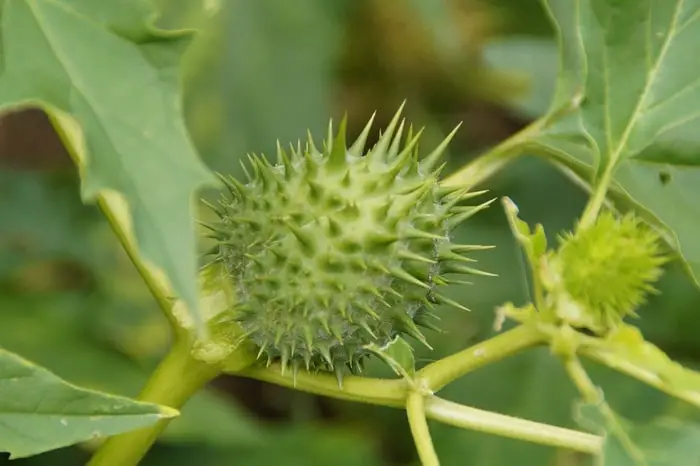
7. Potato (Solanum spp). Potato is a common vegetable to humans and readily available to horses close to human accommodation. The toxic principles of potatoes are solanine. Excessive ingestion of potato a high amount may cause excitements, incoordination, diarrhea, dehydration, weakness, and depression.
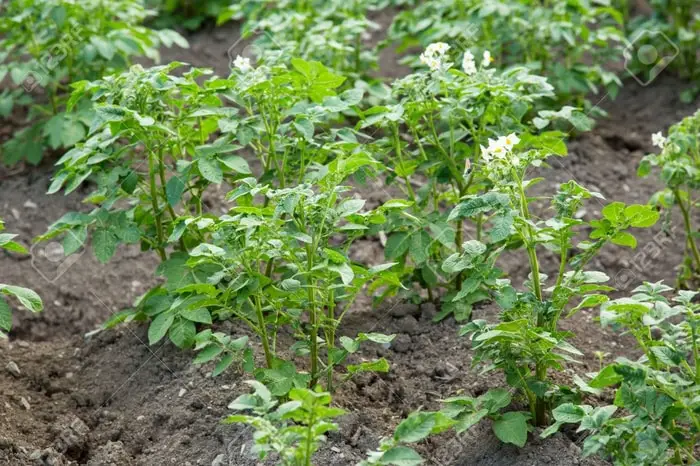
8. Tomato (Lycopersicon spp). Tomato is a common and very delicious vegetable. The vegetables are lucrative, and horses may eat large amounts is readily available. The toxic substance is solanine and causes diarrhea, incoordination, and weakness.

9. Lilies (Lillium spp). Excessive ingestion of lilies causes convulsion, vomiting, diarrhea, cardiac arrest, renal tubular damage, and damage of renal epithelium.
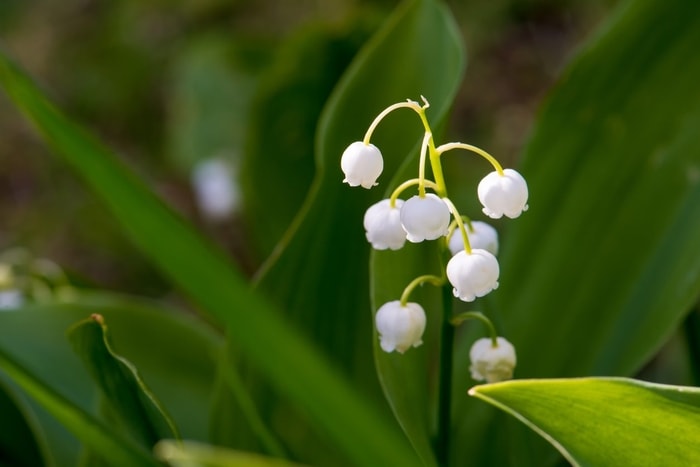
10. Bracken Fern (Pteridium aquilinum). Bracken ferns are commonly available in horse’s pasture, grassland, and stable premises. The toxic principle of Bracken fern is thiaminase. The toxin causes poor appetite, weight loss, incoordination of hindquarters, and slow heart rate.
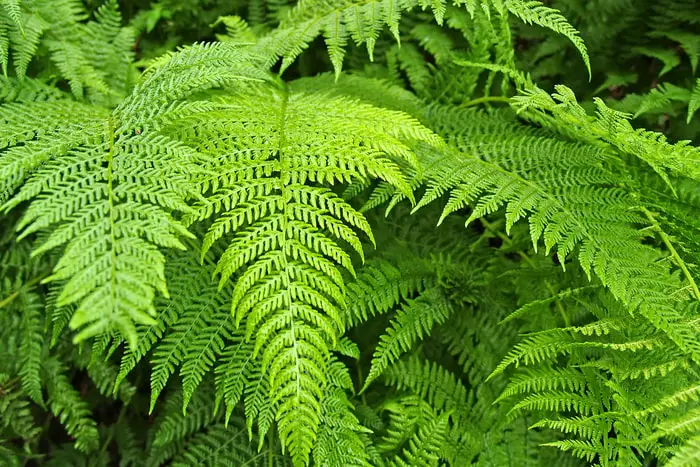
11. Johnson’s Grass (Sorghum halepense). Johnson’s grass is a cyanogenic plant and causes sudden death in animals if ingested in large amounts. The toxic principle is cyanogenic glycosides. The clinical signs are hind leg incoordination, urinary bladder inflammation, incontinence, and weight loss.
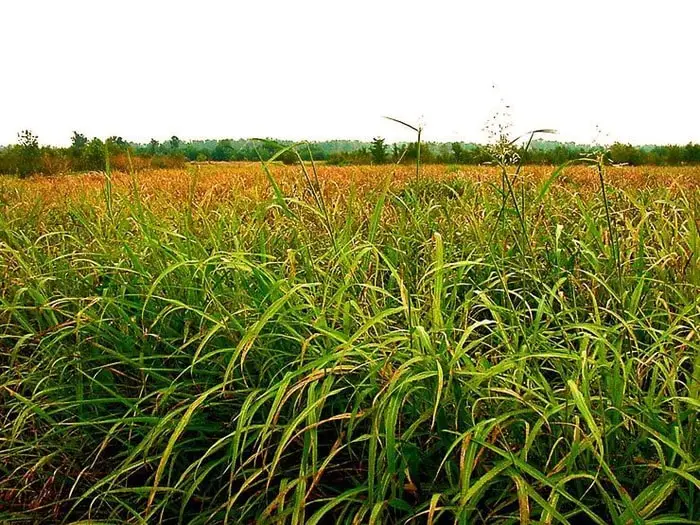
12. Nux Vomica (Strychnos spp). The toxic substance of nux vomica is strychnine. The clinical signs in horses are sudden death and convulsion due to spasms of respiratory muscles.
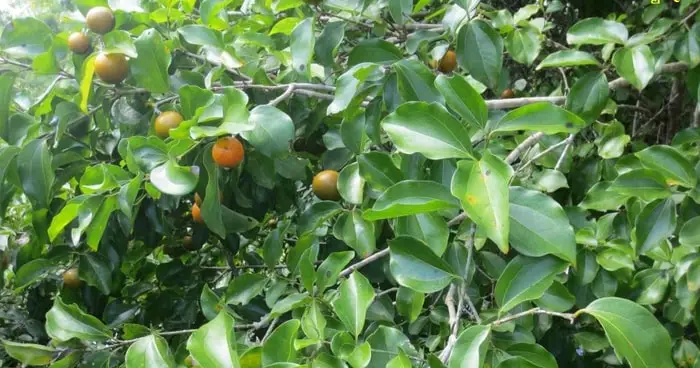
Types of Toxic Plants For Horses
In the previous paragraph, we saw that the toxic principles of each toxic plant are different, and they produce different clinical signs. Based on the clinical signs and effects on horses, the poisonous plants for horses are classified as follows:
1. Salivation Inducing Plants
- The plant has mechanically injurious substances like thorns, bristles, stinging hairs, or sharp awns.
- Rhododendron and many other plants may also cause excessive salivation, but that is not the primary effect.
- Profuse salivation is the only significant sign of mycotoxins produced by fungi infecting alfalfa pastures or hay.
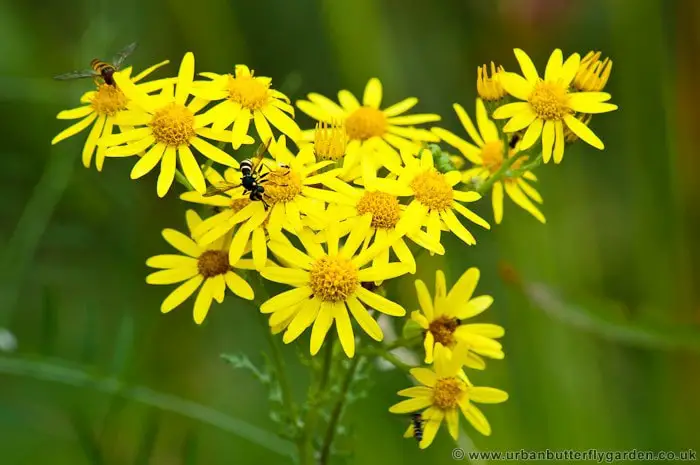
2. Colic and Diarrhea Inducing Plants
- Direct or local actions of toxins.
- The action of toxins through the central nervous system.
- Obstruction or impaction is caused by toxic plants of the small or large intestines.

3. Photo-dermatitis Inducing Grasses
- It occurs due to the accumulation of photodynamic compounds in the skin, which, when exposed to UV light, fluoresce, release energy, which causes cellular damage.
- Primary photodermatitis may be caused by plants containing photosensitive pigments, which are absorbed and accumulated in the skin.
- Secondary photodermatitis is hepatogenous, secondary to liver diseases caused by plant toxins.
- Secondary photodermatitis is more common than the primary type.
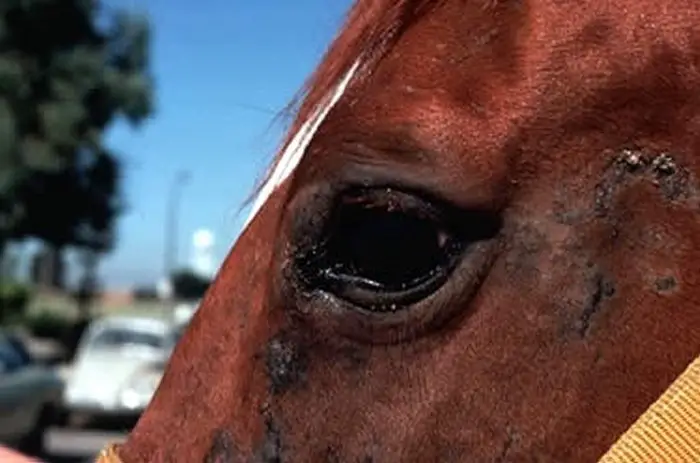
4. Neurologic Disease Inducing Plants.
Signs include behavioral alterations, blindness, inability to ingest and chew food, incoordination, depression, and convulsion.
5. Lameness Inducing Weeds
- Selenium accumulating plants (Astragalus and Asters) or forage crops (Alfalfa and other hays).
- Grown in selenium-rich soil (mostly alkaline soil) may produce lameness.
- Many kinds of grass-like Para grass (Brachiaris spp) and Napier grass (Penninsetum spp), have a rich oxalate content and cause secondary calcium deficiency if consumed for more than a few months; a significant part of the horse diet.

6. Anemia Inducing Plants
- Hemolytic anemia is caused by consuming onion (Allium spp).
- Hemorrhagic anemia is produced by eating moldy sweet clover (Melilotus spp) hay in quantities more than 25% of the total diet over several weeks.
7. Teratogenic Weeds
- Plant teratogens are complex compounds that cross the placenta and cause fetal resorption, abortion, stillbirths, or deformed newborns.
- Teratogens are most harmful during the first trimester of pregnancy.
- A teratogen must be present in the developing conceptus at a specific stage and in sufficient quantity to exert an effect.
- The common teratogenic plants are Tobacco (Nicotiana tabacum), Thorn apple (Dutura stramonium), Sudan grass (Sorghum sudanensis), etc.
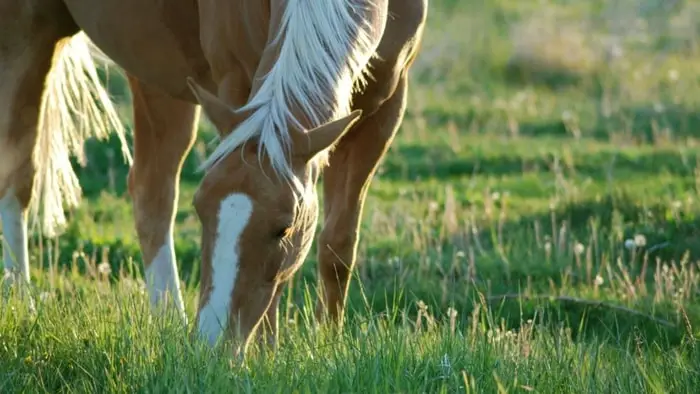
8. Sudden Death Inducing Plants
- Sudden death is relatively uncommon.
- Such plants may contain cyanogenic or cardiac glycosides.
- Plants containing cyanogenic glycosides include Johnson Grass or baroo (Sorghum halepens) and Sudan grass.
- Plants are containing cardiac glycosides include Oleander (Nerium oleander) and Yellow Oleander (Thevetia peruviana).
Concluding Remarks on Toxic Plants for Horses
Horses are mostly live on pasture and hay. Most of the time, a horse passes his time on pasture. A general horse which not used for any work, race, breeding, or lactation can maintain its body functions only on a good quality pasture. Pasture management is one of the essential tools of horse management. You must be cautious about the toxic plants of horse pasture. As a horse owner, your pasture must be free from poisonous plants.